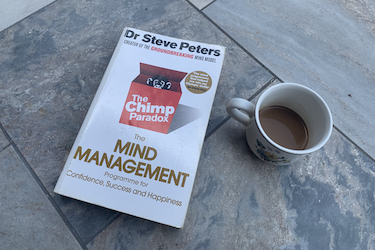Lean Six Sigma has become one of the most powerful business improvement methods used by companies worldwide. Benjamin Sweeney's "Lean Six Sigma QuickStart Guide" promises to make this complex topic accessible to beginners and experienced professionals alike. We decided to review this book to see if it truly delivers on its promise of simplifying these important business concepts.

This book successfully combines Lean manufacturing principles with Six Sigma statistical analysis in a way that's easy to understand, making it an excellent starting point for anyone wanting to learn these methods. Published by ClydeBank Business, the guide focuses on practical application rather than complex theory. The author uses plain language throughout the book, which helps readers grasp key concepts without getting lost in technical terms.
We found that Sweeney's approach makes Lean Six Sigma feel less overwhelming than other books on this topic. The book covers essential frameworks like DMAIC and waste reduction techniques whilst maintaining a clear, step-by-step structure. Whether you're new to business improvement methods or looking to refresh your knowledge, this guide offers valuable insights that can be applied across different industries.
Key Takeaways
- The book successfully simplifies complex Lean Six Sigma concepts using plain language that both beginners and experts can understand
- Sweeney effectively combines practical frameworks with real-world applications across various industries
- The guide serves as an excellent entry point for learning data-driven quality management and waste reduction techniques
Overview of Lean Six Sigma QuickStart Guide

This guide serves as an accessible entry point into Lean Six Sigma methodology, written by an industry practitioner with real-world warehouse operations experience. The book targets both complete beginners and professionals seeking to refresh their foundational knowledge through plain language explanations.
About the Author
Benjamin Sweeney brings practical expertise to the Lean Six Sigma QuickStart Guide through his active role in industry operations. He currently works for a major national restaurant chain, where he oversees front-line warehousing operations.
This hands-on experience provides Sweeney with real-world insights that inform his writing. His operational background allows him to explain concepts from a practitioner's perspective rather than purely theoretical terms.
The author's current employment in warehouse management gives him direct exposure to the efficiency challenges that Lean Six Sigma addresses. This practical foundation helps bridge the gap between methodology and actual implementation.
Intended Audience
The Lean Six Sigma QuickStart Guide caters to novice-level learners who need foundational understanding of the methodology. We find it particularly suitable for professionals entering quality improvement roles or those seeking basic certification preparation.
The book also serves experts looking to revisit fundamental concepts. Business leaders wanting to understand Lean Six Sigma principles without technical complexity represent another key audience segment.
Self-paced learners benefit from the guide's accessible structure. The plain language approach removes barriers for readers without prior quality management experience.
Small business owners and middle managers often use this guide as their first introduction to process improvement methodologies. Students beginning their quality management education also find value in its simplified explanations.
Book Structure and Layout
The guide follows a learn-and-go format designed for accessibility and practical application. Sweeney deliberately avoids jargon, making complex concepts understandable for beginners.
Plain language explanations form the backbone of each chapter. The structure supports self-paced learning through clear progression from basic concepts to practical application.
The layout emphasises systematic identification of waste and non-value-adding activities. Statistical analysis concepts receive simplified treatment suitable for non-technical readers.
Each section builds upon previous knowledge without overwhelming newcomers. The guide balances thoroughness with simplicity, ensuring readers grasp core principles without unnecessary complexity.
The book's organisation supports both linear reading and reference use. This flexibility accommodates different learning styles and professional needs.
Fundamental Concepts of Lean and Six Sigma

Lean Six Sigma combines two powerful methodologies that focus on eliminating waste and reducing defects. Both approaches originated from manufacturing but have expanded across industries to improve processes and customer satisfaction.
Origins and Evolution
Six Sigma began at Motorola in the 1980s when the company needed to improve product quality. Engineers developed statistical methods to reduce defects to 3.4 per million opportunities. This approach helped Motorola save billions of dollars and win the Malcolm Baldrige National Quality Award.
General Electric later adopted Six Sigma under CEO Jack Welch in the 1990s. The company expanded the methodology beyond manufacturing into service industries. This move proved that Six Sigma worked for different types of businesses.
Lean principles come from the Toyota Production System, developed after World War II. Toyota focused on eliminating waste and improving flow in their manufacturing processes. The system helped Toyota become one of the world's most efficient car manufacturers.
In the early 2000s, companies began combining Lean and Six Sigma. This merger created a more complete approach to process improvement. The combination addresses both speed and quality issues together.
Key Principles of Lean
Lean focuses on five core principles that guide improvement efforts:
- Value - Understanding what customers actually want and are willing to pay for
- Value Stream - Mapping all steps needed to deliver products or services
- Flow - Making work move smoothly without interruptions or delays
- Pull - Producing only what customers need when they need it
- Perfection - Continuously improving processes to eliminate all waste
The Toyota Production System identified eight types of waste:
- Overproduction
- Waiting time
- Unnecessary transport
- Over-processing
- Excess inventory
- Unnecessary movement
- Defects
- Unused talent
Lean uses visual management tools like kanban boards and 5S workplace organisation. These methods help teams see problems quickly and maintain improvements. The approach emphasises respect for people and continuous learning.
Six Sigma Methodology
Six Sigma uses data and statistics to solve problems systematically. The methodology follows a structured approach called DMAIC:
| Phase | Focus | Key Activities |
|---|---|---|
| Define | Problem identification | Set project goals and customer requirements |
| Measure | Data collection | Gather baseline performance data |
| Analyse | Root cause analysis | Find what causes problems |
| Improve | Solution implementation | Test and apply improvements |
| Control | Sustain gains | Monitor results and prevent problems |
Six Sigma measures quality using defects per million opportunities (DPMO). A Six Sigma process produces fewer than 3.4 defects per million opportunities. Most processes operate at three or four sigma levels.
The methodology uses statistical tools like control charts, regression analysis, and hypothesis testing. These tools help teams make decisions based on facts rather than opinions. Six Sigma also includes a belt system for training practitioners at different skill levels.
Understanding Six Sigma: Data-Driven Quality Management
Six Sigma uses statistical analysis to measure performance at 3.4 defects per million opportunities whilst customer expectations drive the entire quality framework.
Statistical Analysis and Sigma
The sigma level measures how often defects occur in any process. We calculate this using statistical analysis of data collected over time.
Sigma Level Breakdown:
- One Sigma: 690,000 defects per million opportunities
- Three Sigma: 66,800 defects per million opportunities
- Six Sigma: 3.4 defects per million opportunities
Statistical analysis forms the backbone of Six Sigma methodology. We collect data points and measure variation in processes. The normal distribution curve shows us where most outcomes fall.
Higher sigma levels mean better quality. Most companies operate between three and four sigma. Six Sigma represents near-perfect performance.
We use control charts, histograms, and regression analysis. These tools help identify patterns in data. Statistical significance guides our decisions rather than guesswork.
Defects per Million Opportunities Benchmark
Defects per million opportunities (DPMO) provides a standard way to compare processes. This benchmark works across different industries and process types.
Common Industry Benchmarks:
- Airline baggage handling: 18,000 DPMO (3.5 sigma)
- Restaurant orders: 6,200 DPMO (4 sigma)
- Prescription writing: 25,000 DPMO (3.3 sigma)
We calculate DPMO by counting defects, opportunities, and units processed. The formula divides total defects by total opportunities, then multiplies by one million.
This metric helps organisations understand their current performance level. It also sets realistic improvement targets. Moving from three sigma to four sigma cuts defects by 90%.
World-class performance typically means four sigma or better. Six Sigma represents the gold standard that few organisations achieve consistently.
Customer Expectations and Quality
Customer expectations define what counts as a defect in Six Sigma projects. We must understand what customers value most about our products or services.
Key Customer Quality Factors:
- Accuracy of delivery times
- Product functionality and reliability
- Service responsiveness
- Billing accuracy
Voice of the Customer (VOC) research captures these expectations. We use surveys, interviews, and complaint data. This information translates into measurable quality standards.
Customer expectations often exceed internal quality standards. What we consider acceptable might disappoint customers. Six Sigma aligns internal processes with external expectations.
Critical-to-quality characteristics emerge from customer feedback. These become the metrics we track and improve. Meeting customer expectations drives the entire Six Sigma framework.
We regularly review and update these expectations. Customer needs change over time. Our quality standards must evolve accordingly.
Lean Methodology and Waste Reduction
The Lean methodology focuses on eliminating waste whilst maximising value for customers. We explore eight types of waste that drain efficiency, continuous improvement principles, and visual management tools that drive operational excellence.
Types of Waste in Lean
The Toyota Production System identifies eight categories of waste that reduce efficiency in any organisation. We call these "muda" in Lean terminology.
The Eight Wastes:
- Overproduction - Making more than customers need
- Waiting - Idle time between processes
- Transport - Unnecessary movement of materials
- Overprocessing - Doing more work than required
- Inventory - Excess stock taking up space and resources
- Motion - Unnecessary movement of people
- Defects - Errors requiring rework
- Skills - Underutilised human talent
Overproduction often triggers other wastes. When we produce too much, we create excess inventory. This leads to additional transport and storage needs.
Manufacturing environments typically show these wastes clearly. However, service industries face similar challenges with waiting times and overprocessing.
Continuous Improvement and Kaizen
Kaizen means "change for better" in Japanese. We use this approach to make small, ongoing improvements rather than large, disruptive changes.
The Kaizen cycle follows four steps: Plan, Do, Check, Act. We identify problems, test solutions, measure results, and implement changes.
Key Kaizen Principles:
- Everyone participates in improvement
- Small changes create big results
- Focus on processes, not people
- Use data to guide decisions
Teams meet regularly to discuss improvement opportunities. We encourage front-line workers to suggest changes since they understand daily operations best.
Continuous improvement requires commitment from all levels. Management must support employee suggestions and provide resources for testing new ideas.
Visual Tools in Practice
Visual management makes problems visible immediately. We use simple tools that anyone can understand at a glance.
Common Visual Tools:
- 5S boards - Organise workspaces efficiently
- Kanban cards - Control work flow and inventory
- Andon lights - Signal when help is needed
- Gemba walks - Observe actual work processes
Kanban systems originated in Toyota's manufacturing processes. Cards or signals tell us when to produce or move items. This prevents overproduction and reduces inventory.
5S creates organised, clean workspaces. We sort, straighten, shine, standardise, and sustain improvements. Visual controls help maintain these standards.
Andon systems alert supervisors to problems instantly. Workers can stop production to address quality issues without fear of blame.
These tools work in offices too. We use visual boards to track project progress and identify bottlenecks quickly.
Application of Lean Six Sigma in Various Industries
Lean Six Sigma proves effective across manufacturing and service sectors, with each industry adapting the methodology to address specific operational challenges. Manufacturing companies focus on production efficiency and defect reduction, whilst healthcare and service organisations emphasise patient safety and customer experience improvements.
Manufacturing Sector Case Studies
Manufacturing remains the primary application area for Lean Six Sigma implementation. The DMAIC approach (Define, Measure, Analyse, Improve, and Control) forms the foundation for most manufacturing projects.
Production lines benefit from waste elimination and variation reduction. Companies typically see improvements in cycle times, defect rates, and overall equipment effectiveness.
Common Manufacturing Applications:
- Quality control processes
- Supply chain optimisation
- Production scheduling
- Inventory management
- Equipment maintenance
Automotive manufacturers use Six Sigma to reduce warranty claims and improve assembly line efficiency. Electronics companies apply the methodology to minimise component defects and streamline testing procedures.
The data-driven approach helps manufacturers identify root causes of production issues. Teams collect metrics on defect rates, processing times, and resource utilisation to guide improvement efforts.
Service and Healthcare Adaptations
Healthcare organisations adapt Lean Six Sigma to improve patient outcomes and operational efficiency. Hospitals focus on reducing wait times, medication errors, and patient safety incidents.
Service industries modify traditional manufacturing tools for customer-facing processes. Banks use the methodology to streamline loan approvals and reduce processing errors.
Key Service Sector Benefits:
- Reduced customer wait times
- Improved service quality
- Lower operational costs
- Enhanced patient safety
Healthcare projects often target emergency department flow and discharge processes. Administrative functions like billing and scheduling benefit from process standardisation and error reduction.
Financial services apply Six Sigma to claims processing and customer onboarding. The methodology helps identify bottlenecks in approval workflows and reduces customer complaints.
Practical Frameworks: DMAIC and DMADV
Sweeney's guide explores two essential methodologies that form the backbone of Lean Six Sigma implementation. DMAIC improves existing processes through systematic analysis, whilst DMADV creates entirely new processes from the ground up.
DMAIC Model Explained
The DMAIC framework provides a structured approach for improving existing processes that aren't meeting performance standards. We use this methodology when processes already exist but need refinement.
Define establishes project scope and customer requirements. We identify specific problems and set clear goals for improvement.
Measure involves collecting baseline data about current process performance. We gather metrics that help us understand how the process currently operates.
Analyse uses statistical analysis to identify root causes of defects or inefficiencies. We examine data patterns to find where problems originate.
Improve develops and implements solutions based on our analysis. We test changes on a small scale before full deployment.
Control ensures improvements stick long-term. We create monitoring systems and standard procedures to maintain gains.
This framework works best for processes that function but need optimisation. We apply DMAIC when existing data is available and the process structure is already established.
DMADV for New Process Design
DMADV focuses on creating new products, services, or processes from scratch. We use this methodology when existing processes can't be improved enough to meet requirements.
Define establishes customer needs and project goals for the new design. We identify what the new process must accomplish.
Measure translates customer requirements into measurable specifications. We set performance targets before design begins.
Analyse explores different design options and evaluates their potential effectiveness. We use statistical analysis to predict which approaches will succeed.
Design creates detailed plans for the new process. We develop comprehensive specifications and procedures.
Verify tests the new design to ensure it meets requirements. We validate performance through pilot programmes and data collection.
DMADV requires more upfront planning than DMAIC because we're building something entirely new. We choose this approach when current processes can't deliver the quality levels customers demand.
Tools for Implementation and Measurement
Sweeney outlines practical tools that turn Lean Six Sigma theory into action. These methods help teams gather meaningful data, understand customer needs, and track progress visually.
Collecting and Analysing Process Data
Statistical analysis forms the backbone of Lean Six Sigma measurement. The book explains how we can use basic statistical tools without needing advanced mathematics degrees.
We start with simple data collection methods. These include check sheets for tracking defects and histograms for showing data patterns. Process capability studies help us understand how well our processes meet customer requirements.
Control charts monitor process stability over time. They show us when our processes stay within normal limits. When points fall outside these limits, we know something has changed.
The book covers measurement system analysis too. This ensures our measuring tools give us accurate data. Poor measurement tools lead to wrong decisions.
Key statistical tools include:
- Process capability ratios (Cp, Cpk)
- Standard deviation calculations
- Correlation analysis
- Hypothesis testing basics
Role of the Voice of the Customer
Voice of the customer drives all improvement efforts. Sweeney shows us how to capture what customers truly value, not what we think they want.
We learn to translate customer feedback into measurable requirements. Critical to Quality (CTQ) characteristics turn vague customer needs into specific targets. For example, "fast service" becomes "order processed within 2 minutes."
The book explains different ways to gather customer input. Surveys and interviews provide direct feedback. Complaint analysis reveals common problems. Market research shows broader trends.
Customer requirements must be:
- Specific and measurable
- Achievable with current resources
- Relevant to business goals
- Time-bound with clear deadlines
We also learn to prioritise customer needs. Not all requirements carry equal weight. The most important ones get our attention first.
Visual Management Techniques
Visual tools make complex data easy to understand. Sweeney emphasises how pictures often work better than numbers alone.
Process maps show how work flows through our organisation. They help us spot bottlenecks and waste. Value stream maps go deeper by showing which steps add value for customers.
Dashboards track key metrics in real time. They use colours and charts to highlight problems quickly. Green means good performance, red signals trouble.
The book covers 5S workplace organisation as a visual tool. Everything has its place and problems stand out immediately. Clean, organised workspaces reduce errors and waste.
Effective visual management includes:
- Clear performance displays
- Standardised symbols and colours
- Regular updates to stay current
- Easy access for all team members
Pareto charts show which problems matter most. They follow the 80/20 rule where few causes create most problems.
Strengths, Limitations, and Reader Perspectives
Benjamin Sweeney's Lean Six Sigma QuickStart Guide offers a beginner-friendly approach to understanding process improvement methodology. The book's accessibility makes it valuable for newcomers, though some readers find it lacks depth for advanced practitioners.
Strengths and Benefits Highlighted
The book's plain language approach stands out as its primary strength. Sweeney deliberately avoids technical jargon that often confuses beginners.
This makes complex Six Sigma concepts accessible to people without engineering backgrounds. We found this particularly helpful for business managers and team leaders.
The systematic structure helps readers understand both Lean and Six Sigma principles step by step. The book explains how these two approaches work together effectively.
Key benefits include:
- Clear explanations of waste identification methods
- Simple tools for process mapping
- Basic statistical concepts made understandable
- Real-world application examples
The self-paced learning design lets readers progress at their own speed. This flexibility works well for busy professionals.
We appreciate how the book connects theory to practical workplace situations. The examples help readers see how to apply the concepts immediately.
Limitations and Criticisms
The book's simplified approach can be too basic for experienced practitioners. Advanced Six Sigma users may find the content lacks depth.
Limited statistical coverage restricts its usefulness for complex projects. The book covers basic statistics but doesn't prepare readers for advanced analytical work.
Some readers report wanting more detailed case studies. The examples provided are helpful but relatively brief.
Key limitations include:
- Shallow coverage of measurement systems
- Missing advanced problem-solving tools
- Limited industry-specific applications
- Brief treatment of team leadership aspects
Certification preparation isn't the book's strength. Readers planning to take Six Sigma exams need additional resources.
The book focuses more on concepts than hands-on practice. Some readers prefer more interactive exercises and worksheets.
User Reviews and Recommendations
Beginners consistently praise the book's clear writing style. Many report finally understanding Six Sigma after reading other confusing materials.
Business managers appreciate the practical focus on waste reduction. The book helps them identify improvement opportunities in their departments.
Experienced practitioners often recommend it as a team training resource. They use it to introduce Six Sigma concepts to new team members.
Common positive feedback includes:
- Easy to read during commutes
- Good foundation for further learning
- Helpful for cross-training staff
- Reasonable price point
Critical reviews typically mention the basic content level. Some readers expected more technical depth for the price.
We notice that readers who combine this book with additional resources report better results. The book works best as a starting point rather than a complete guide.
Many reviewers suggest following up with more detailed texts or formal training programmes.
Frequently Asked Questions
This book addresses common questions about Lean Six Sigma fundamentals, implementation strategies, and practical applications. The guide focuses on making complex methodologies accessible whilst providing actionable tools for workplace improvement.
What are the core concepts covered in 'Lean Six Sigma QuickStart Guide'?
The book combines Lean manufacturing principles with Six Sigma statistical analysis. Lean focuses on minimising waste through systematic identification and elimination of non-value-adding activities.
Six Sigma provides the statistical framework for measuring and improving process quality. The methodology uses data-driven approaches to reduce defects and variations.
The guide covers the DMAIC process (Define, Measure, Analyse, Improve, Control). This structured approach helps organisations tackle problems systematically.
Key tools include process mapping, root cause analysis, and statistical control charts. These methods help identify bottlenecks and improvement opportunities.
How does 'Lean Six Sigma QuickStart Guide' simplify the principles for beginners?
The book is written in plain language that avoids technical jargon. Complex concepts are broken down into digestible sections for self-paced learning.
Sweeney uses straightforward explanations rather than academic theory. The content is designed for novice-level learners who need practical understanding.
The guide serves as a learn-and-go entry point into the methodology. Readers can apply concepts immediately without extensive prior knowledge.
Visual aids and clear definitions help explain statistical concepts. This approach makes advanced quality management accessible to all skill levels.
Does the book provide practical examples and case studies for implementing Lean Six Sigma?
The author draws from real-world experience in operations management. Sweeney currently works in warehousing operations for a major restaurant chain.
Industry insights are woven throughout the content. These examples help readers understand how concepts apply in actual business situations.
The book includes scenarios that demonstrate problem-solving techniques. Readers can see how tools work in practice rather than just theory.
Practical applications show measurable results from Lean Six Sigma implementation. This helps readers understand the potential impact on their organisations.
In what ways can 'Lean Six Sigma QuickStart Guide' benefit managers and team leaders?
The guide provides managers with systematic approaches to process improvement. Leaders learn how to identify waste and inefficiency in their operations.
Team leaders gain tools for engaging employees in quality initiatives. The methodology creates structured frameworks for collaborative problem-solving.
Managers learn to make data-driven decisions rather than relying on assumptions. This approach leads to more effective resource allocation and planning.
The book helps leaders communicate improvement goals clearly. Teams can work towards specific, measurable objectives using shared terminology.
Is there a section in the book that addresses common pitfalls or misconceptions in applying Lean Six Sigma methodologies?
The guide focuses on practical implementation challenges that organisations face. Common mistakes are addressed through straightforward explanations.
Misconceptions about statistical complexity are clarified early in the book. Readers learn that advanced mathematics isn't always necessary for basic applications.
The author emphasises that Lean Six Sigma isn't just for manufacturing environments. Service industries and office processes can benefit equally from these methods.
Implementation timing and resource requirements are discussed realistically. This helps organisations set appropriate expectations for their improvement journeys.
What additional resources, such as templates or tools, does the book offer to supplement the learning experience?
The guide is designed as a comprehensive starting point for Lean Six Sigma education. It provides foundational knowledge that supports further learning.
Readers gain access to proven methodologies they can implement immediately. The book serves as a reference guide for ongoing improvement efforts.
The content connects to broader Lean Six Sigma certification paths. This helps readers understand next steps in their professional development.
Framework explanations provide templates for structuring improvement projects. Teams can use these approaches to organise their quality initiatives effectively.





















